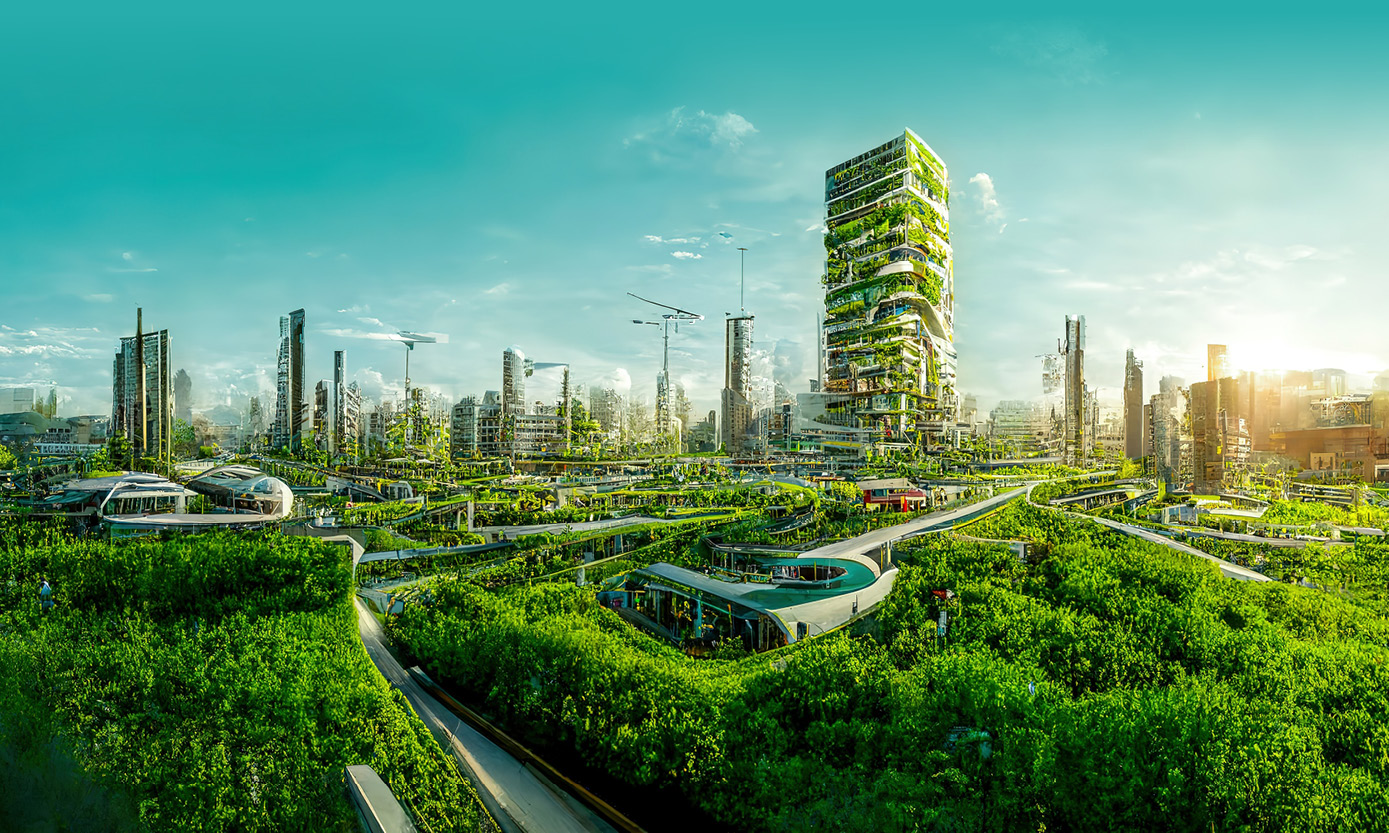Smart cities are no longer a pipe dream. The Indian government, working with state governments and authorities, is making it a beautiful reality. What was previously hidden behind digital frames will soon be visible in the Indian atmosphere. Since the launch of the Smart City India project in 2016, many states have begun to transform their cities into a completely new world.
However, the mission’s five-year timeframe is lacking. To make the Smart Cities Mission a success, it would be a good idea to extend the span. Furthermore, citizens can now expect to have easy access to all government services. The Smart City project aims to provide an elevated lifestyle and environment to all segments of the community.
There is so much to Smart City India that most people are unaware of. Square Yards has compiled a list of smart cities in India, along with information on when and how this project will be implemented.
What is the Smart City Mission?
The Smart Cities Mission is a Government of India initiative aimed at improving the lifestyles of citizens in a particular city or town. Best practices, information, and smart technologies will all contribute to the advancement of this initiative. Several public-private partnership firms will also participate in the Smart Cities Mission.
India’s Prime Minister Narendra Modi launched this mission on June 25, 2015. Furthermore, the Union Ministry of Urban Development is in charge of carrying out the mission across the cities. In addition, each state has established a Special Purpose Vehicle (SPV) led by the CEO. It is done to ensure the proper implementation of Smart City projects. The government has allocated ₹ 7,20,000 crore to ensure successful implementation of new age development initiatives.
A five-round process resulted in the selection of 100 cities across India. Development begins in accordance with the master plan and list of India’s smart cities. All states, except West Bengal, have participated in this development mission. WB is not a part of this initiative due to ideological differences between the state and central governments. Following this, Navi Mumbai and Mumbai withdrew from the Maharashtra state’s mission.
Features of the Smart Cities Mission in India
The Smart Cities Mission’s main goal is to stimulate economic growth while also improving lifestyle quality. But how will these objectives be met? Learn about how Smart City India’s objectives for growth will be implemented through its features.
The mission encourages the use of mixed land in accordance with its per-area use plan. As a result, the state can use vast amounts of land for a variety of purposes and create bye-laws to match. This mission aims to complete the multiple uses of a land area by implementing environmentally friendly measures.
Another major goal of Smart City projects is to provide housing choices for everyone. Living quarters are the building blocks for achieving smart development objectives. As a result, more housing construction projects will be undertaken to provide shelter for low-income communities.
The mission is to provide people with relief from congestion. Smart City India will also improve public safety, promote communication, and reduce smog. New pedestrian streets are also being built to help cyclists and walkers avoid accidents.
The mission’s other major goals include the development of recreational areas such as gardens, parks, open gyms, playgrounds, and more. This will help to promote a healthy lifestyle among Indian citizens.
Government services are gradually becoming digital in order to promote transparency and accountability within the system and among citizens. As a result, citizens can now request services or assistance through the portal rather than visiting the municipal office.
More transport options are being promoted across the country. These include public transportation and transit-oriented development (TOD).
Each city is also identified in a variety of areas, including education, local cuisine, health, arts, sports, fashion, culture, and many more.
Smart technologies are introduced and implemented in services and infrastructure to promote the development of the area.
Smart City India: Smart Solutions
The Smart Cities Mission offers the following smart solutions for basic infrastructure construction:
Grieval redressal and public information
Delivery of electronic services
Eyes and ears for the city’s citizens
Monitoring of video crimes
Citizen engagement
Waste to compost initiative
Waste to fuel and energy
Every drop treatment
C&D waste treatment
Smart meters
Electricity and water management
Identification of leakage
Monitoring water quality
Renewable energy source
Green buildings
Energy efficiency
Smart parking system
System of intelligent traffic management
Integrated multi-modal transportation system
Tele-medicine
Centre of trade facilitation
Skill development centres
Financing the Smart Cities Mission in India
The Government of India has accumulated funds totalling ₹ 7,20,000 crore. The total cost for 100 smart cities and projects is ₹100 crore per city over five years. This scheme is sponsored as a Centrally Sponsored Scheme (CSS) and follows the 50:50 model. The Central Government will contribute 50% (₹ 50 crores), while the State Government/Union Territory will contribute the remaining 50%. Financing for Smart City projects has been challenging, with the Centre releasing ₹ 27,282 crores and the state releasing ₹ 20,124 crores until November 2021.
Smart City List Map
List of Smart Cities in India
The smart city list provided by the Government of India and authorities involved in the development is as follows:
Port Blair
Visakhapatnam
Tirupati
Kakinada
Amaravati
Pasighat
Guwahati
Muzaffarpur
Bhagalpur
Biharsharif
Patna
Chandigarh
Raipur
Bilaspur
Naya Raipur
Diu Dadra & Nagar Haveli
Silvassa
New Delhi Municipal Council
Panaji
Gandhinagar
Ahmedabad
Surat
Vadodara
Rajkot
Dahod
Karnal
Faridabad
Dharamshala
Shimla
Srinagar
Jammu
Ranchi
Mangaluru
Belagavi
Shivamogga
Hubballi Dharwad
Tumakuru
Davangere
Bengaluru
Kochi
Trivandrum
Kavaratti
Bhopal
Indore
Jabalpur
Gwalior
Sagar
Satna Ujjain
Nashik
Thane
Greater Mumbai
Amravati
Solapur
Nagpur
Kalyan-Dombivali
Aurangabad
Pimpri Chinchwad
Imphal
Shillong
Aizawl
Kohima
Bhubaneshwar
Raurkela
Oulgaret
Ludhiana
Jalandhar
Amritsar
Jaipur
Udaipur
Kota
Ajmer
Namchi
Gangtok
Tiruchirapalli
Tirunelveli
Dindigul
Thanjavur
Tiruppur
Salem
Vellore
Coimbatore
Madurai
Erode
Thoothukudi
Chennai
Greater Hyderabad
Greater Warangal
Karimnagar
Agartala
Moradabad
Aligarh
Saharanpur
Bareilly
Jhansi
Kanpur
Prayagraj
Lucknow
Varanasi
Ghaziabad
Agra
Rampur
Dehradun
Smart City Mission India Challenge
India’s Ministry of Urban Development used the competition method of area-based strategy. This was done to facilitate the selection of cities for inclusion in the Smart Cities Mission. The cities in the first phase of the competition competed at the state level in all of the participating cities, and the winners advanced to the national level. The top cities with the highest scores in the national Smart City projects mission were chosen for the development process. The Government of States submitted nominations for all participating cities.
Many other government projects are being linked together to ensure the success of this initiative. Smart City projects aim to create a completely different world by integrating various development components such as social, economic, cultural, institutional, and physical. The various sectorial schemes related to this mission are as follows:
Atal Mission for Rejuvenation and Urban Transformation (AMRUT) – This mission aims to provide people with basic services such as water supply, urban transport, and sewage treatment. It also focusses on developing amenities in various cities that will improve the quality of life, particularly for the country’s poor and disadvantaged citizens.
Heritage City Development and Augmentation Yojana (HRIDYA) – This mission aims to protect and preserve the city’s heritage. It also focusses on providing inclusive heritage that can be linked to urban development by exploring various sectors, including the private sector.
Digital India – Digital India’s mission aims to build a digital infrastructure. This includes digital service delivery and literacy, among other things. The mission aimed to improve digital infrastructure throughout the country.
Make in India – The Make in India mission’s main goals are to foster innovation, promote and facilitate investment, protect intellectual property rights, improve skill development, and build the country’s cutting-edge manufacturing infrastructure.
Pradhan Mantri Awas Yojana – The PMAY aims to provide central assistance to people through implementing agencies in all Indian states and union territories by providing housing solutions to eligible families and beneficiaries.
Swach Bharat Abhiyan – This mission aims to reduce and eliminate open defecation across the country.
Current Status of the Smart City Mission in India
The status of the Smart City India mission, according to the data furnished by the relevant authority as of February 16, 2022, is as follows:
| Particulars | Numbers |
| Cities | 100 |
| Projects | 5151 |
| Amount | ₹ 2,05,018 crore |
| Tendered | 6809 Projects / ₹ 189,737 crore |
| Work orders issued | 6222 Projects /₹ 164,888 crore |
| Work completed | 3480 Projects /₹ 59,077 crore |
Recommendations for Smart City Mission
Here’s a list of some recommendations that can help the Smart Cities Mission succeed and achieve more benefits:
This should be referred to as a long-term mission, rather than a five-year programme. This is because the longer period of time will allow for better performance, which would be impossible to achieve in just five years.
To achieve excellent results, the government should identify additional missions and link them to Smart City projects. Linking with other projects can help deal with more issues and make it easier for cities to resolve them.
Research and findings should be conducted to determine why specific projects are not being carried out. Some of these cities include Muzaffarpur, Shillong, Bhagalpur, and Amravati.
The authorities should raise more funds through taxation in order to mobilise the necessary funds. Furthermore, funds can be transferred to support development.
Cybersecurity should be a major component of this project’s development to ensure the safety of the cities. This ensures encrypted data security that cannot be easily breached.
Smart City Mission under SCM.
The Ministry of Housing and Urban Affairs’ Smart Cities Mission will soon launch a new strategy known as ‘DataSmart Cities’. This new strategy will assist authorities in acquiring data to aid in the resolution of complex urban problems. The new initiative of the Smart City list in India will focus on the advancement of data-driven governance.
This new initiative from DataSmart Cities will also encourage areas to incorporate data culture fundamentals at the local level. These can include forming Smart Cities, forming an alliance of these cities, developing a city data strategy, establishing a network of smart cities, and many more. This new initiative will also encourage citywide peer-to-peer learning about data-driven governance. It outlines reusable cases for smart city development across multiple fields.
Smart City Project Success Stories
As a much-anticipated initiative, the Indian Government and the Ministry of Urban Planning delivered excellent results. The following are some of the Smart City list’s headline-grabbing success stories:
Data Centre Strengthening and Disaster Recovery (DR) Site
The Indian government and its corporate partners have launched several e-governance initiatives. Smart City projects, as well as other projects, are being undertaken to meet citizens’ demand for online services. In recent years, the demand for data centres has grown exponentially. To meet this goal, the Surat Municipal Corporation (SMC) plans to build a data centre and data recovery infrastructure.
Automatic Fare Collection System (AFCS) in Surat.
Surat is one of India’s and the world’s fastest-growing cities, ranking fourth on the list of developing areas. This city offers numerous career opportunities in a variety of business sectors, including textiles and real estate. As the city grew, it began to attract a large number of people for business, employment, and education. This necessitates a better system while also dealing with heavy traffic. In the last three years, the city has undergone numerous significant changes, including the automatic collection of public transport fares.
The Surat Municipal Corporation (SMC) implemented an advanced public transport system with the assistance of the Bus Rapid Transit System (BRTS). The 30 kilometre route underwent advancement in Phase I of the change, which added an additional 42 kilometres in the subsequent phase. This new smart initiative made it simple for both travellers and authorities to pay and collect fares without difficulty. In order to comply with this new system over the next three years, the SMC plans to add 2,000 public city buses and 300 BRTS buses to its fleet.
Visakhapatnam’s Smart Streets
Visakhapatnam received smart streets through the Smart Cities Mission. The pilot construction project includes 7 kilometres of two major city streets. These roads are called Waltair Road and Chinna Waltair Road. This project focusses on wide roadways, bikeways, pedestrian lighting, landscaped corridors, tree planting, and other factors.
















